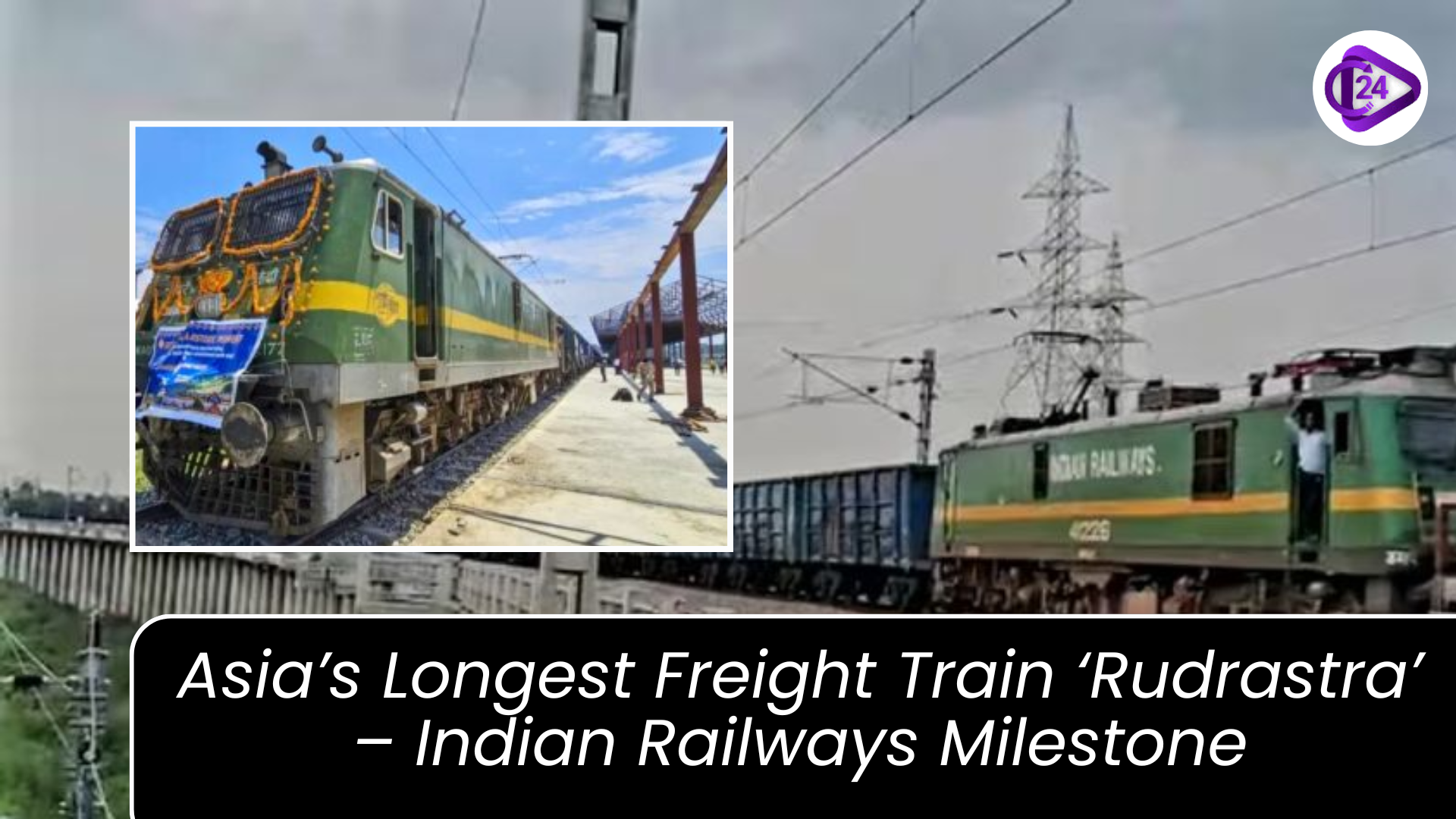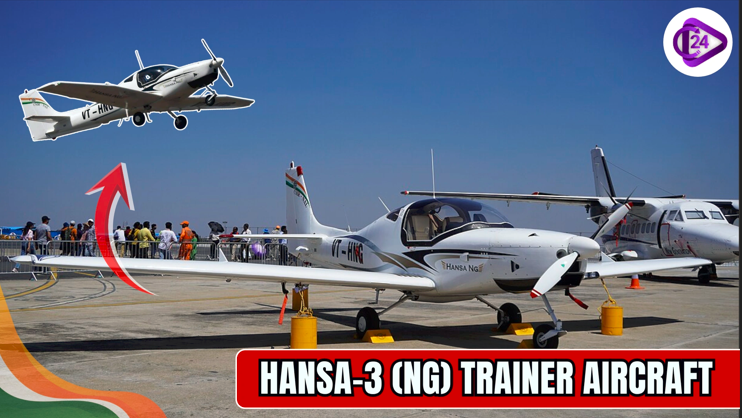
Indian Railways has been able to make a trial run of the longest freight train in Asia, named Rudrastra that covered around 4.5 km and 345 wagons. The trial was over Ganjkhwaja (UP) to Garhwa (Jharkhand) over 209 km in 5 hours 10 minutes at an average of 40.5 km/h. Three long-haul racks each of 59 bogies were bolted together to form the train hauled by seven engines. The innovation is directed towards minimizing turnaround time, ensuring the efficiency of the freights, and saving resources. The successful test opens the way to the more rapid and cost-effective transportation of goods all over India.
Context
-
Indian Railways successfully tested Asia-longest freight train named Rudrastra and it was a turning point in long-distance freight business.
Key Details
-
Longitude: 4.5 km.
-
Total Wagons- 345; capacity of an empty wagon: 72 tonnes.
-
Engines: 7 (two at the front, one between each 59 bogeys).
-
Building: Three high distance racks (each having 2 goods trains).
-
Route: Ganjkhwaja (UP) to Garhwa (Jharkhand), 209 km in 5h 10m; Avg. 40.5 km/h.
Significance
-
Operation Efficiency: It puts together several freight trains in order to improve congestion.
-
Savings of time: High rate of loading and transportation.
-
Cost Effectiveness: less crew and locomotives used per tonne-km carried.
-
Environmental Impact: Reduced use of fuel on a per-tonne-of-cargo basis.
Technological Aspect
-
Long Haul Operation: Application of distributed power control acceleration/braking.
-
Load Management: A homogeneous use of power will avoid derailment, and minimize stress on couplers.
Challenges
-
Necessitates the increased passing loops and platforms at stations.
-
Complicated signalling synchronisation.
-
Greater exposure to failure in the case of mechanical.
Way Forward
-
Widen long-haul freight corridors in heavily utilized patterns.
-
Modernize infrastructure to support long trains using ultra-long trains.
-
Connected to Dedicated Freight Corridors (DFC).
Conclusion
Rudrastra is also a first in Indian freight logistics and in line with the vision of Indian Railways to expand capacity, speed and efficiencies and reduce operational costs, in the journey to becoming a global freight leader.



 Postal Department Considers UPI-like ‘Labels’ for Addresses
Postal Department Considers UPI-like ‘Labels’ for Addresses Data Shows 34% Children Under Five Are Stunted
Data Shows 34% Children Under Five Are Stunted DoT Says, Sanchar Saathi App Must Be Pre-Installed on Phones
DoT Says, Sanchar Saathi App Must Be Pre-Installed on Phones Minister Dr. Jitendra Singh Unveils Hansa-3 (NG) Trainer Aircraft in Bengaluru
Minister Dr. Jitendra Singh Unveils Hansa-3 (NG) Trainer Aircraft in Bengaluru National Milk Day 2025: A Tribute to Dr Kurien and India’s Dairy Future
National Milk Day 2025: A Tribute to Dr Kurien and India’s Dairy Future Centre Implements Four Labour Codes | India’s Biggest Labour Reform 2025
Centre Implements Four Labour Codes | India’s Biggest Labour Reform 2025 Supreme Court Rules No Mandatory Time Limit for Governors on Bills
Supreme Court Rules No Mandatory Time Limit for Governors on Bills MeitY Launches India’s First National AI Governance Framework Under IndiaAI Mission
MeitY Launches India’s First National AI Governance Framework Under IndiaAI Mission Ayushman Bharat Becomes the World’s Biggest Health Coverage Mission
Ayushman Bharat Becomes the World’s Biggest Health Coverage Mission Understanding Crime in India 2023: Highlights from The NCRB Report
Understanding Crime in India 2023: Highlights from The NCRB Report






